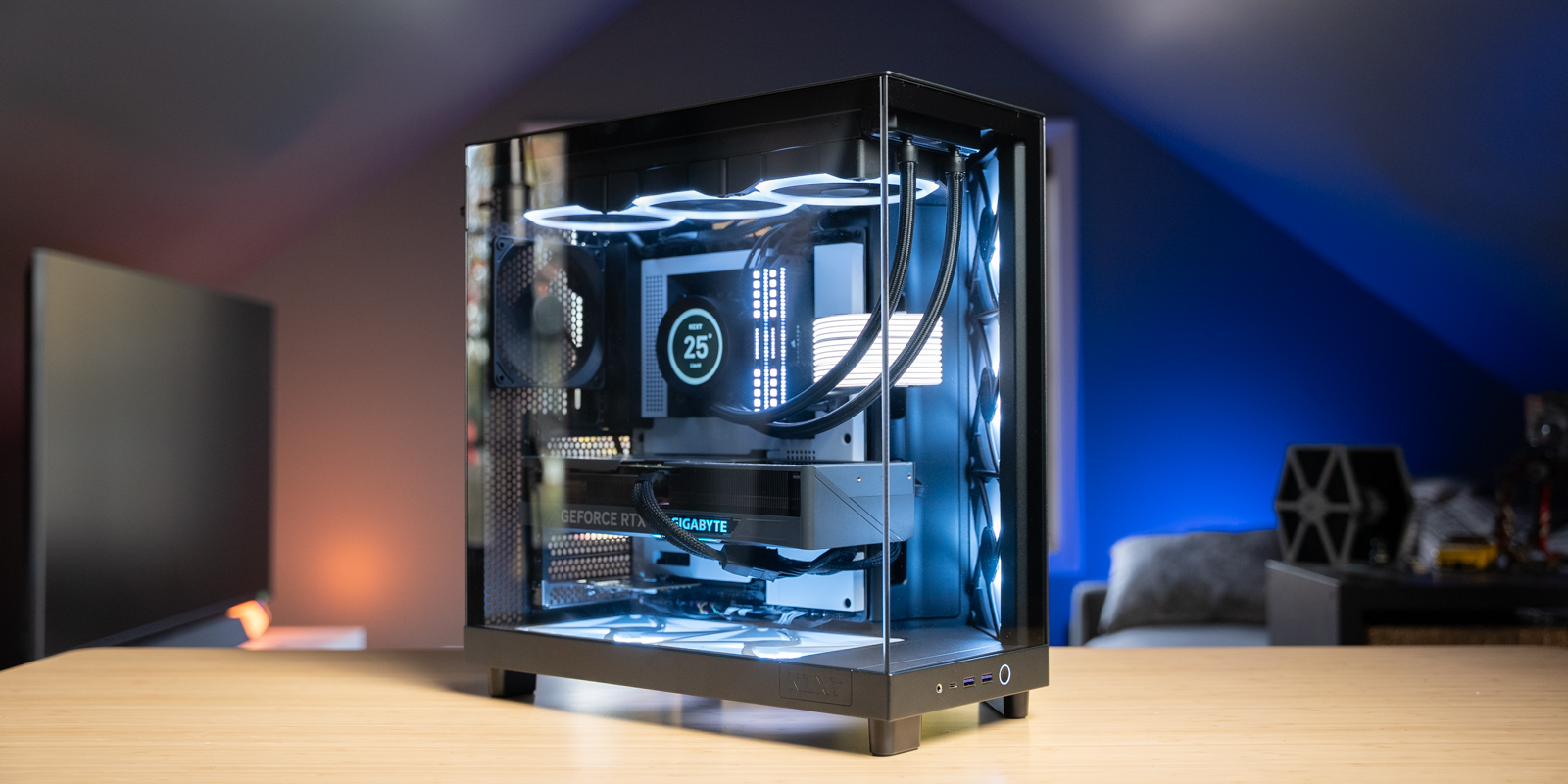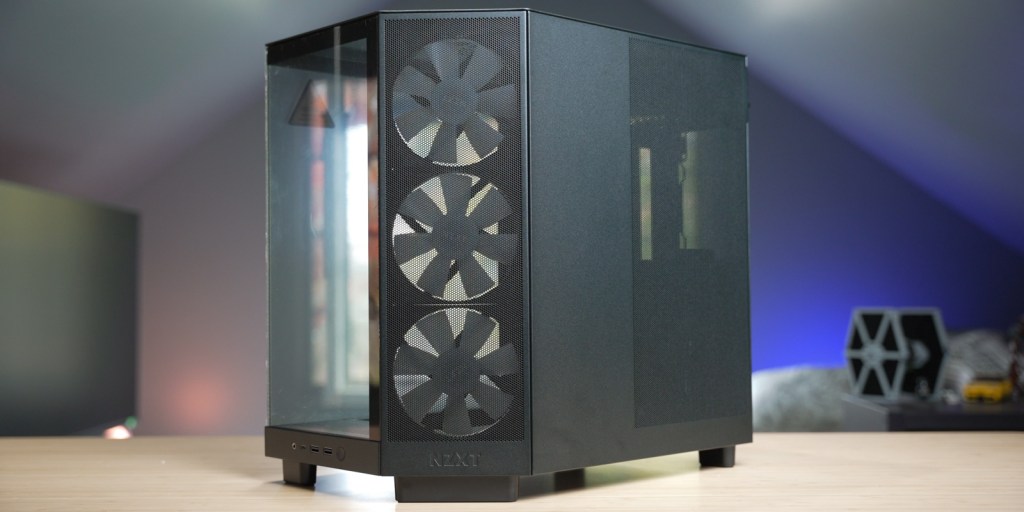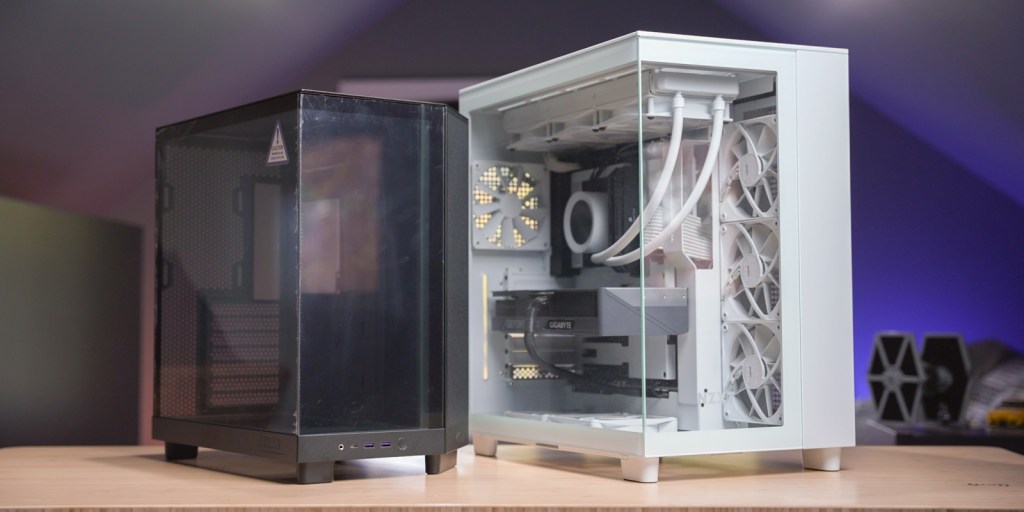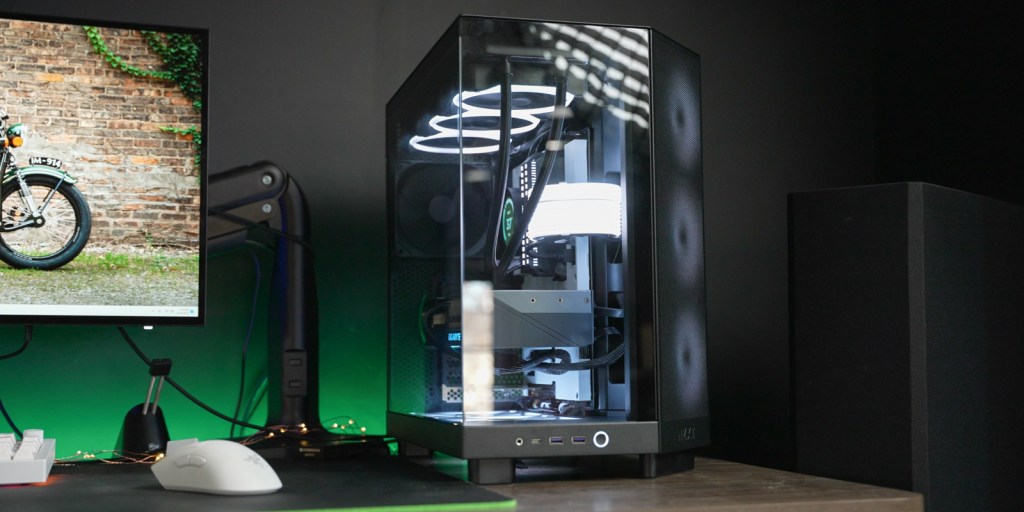
After finishing a build in the NZXT H9 computer case at the beginning of 2023, I loved the look and convenience of dual-chamber designs. But the H9 is a massive case that takes up a lot of room on my desk. Enter the new NZXT H6 – a compact dual-chamber mid-tower with the conveniences of a place to tuck a PSU and cables, but it isn’t as large as the H9. And it has a handy design trick that makes it look even smaller when sitting at my desk. It might be the “just-right” case for my setup. Head below for the full video on the latest cases from NZXT.
NZXT H6 Flow: Overview
This time, NZXT has gone with two versions of the “flow” design with or without RGB. In the past, the Elite versions had RGB and more glass, which looked great, but didn’t have as much airflow.
The H6 Flow comes in at $110, while the RGB case adds only $25 to the price tag. The RGB variant has three 120mm RGB fans pre-installed and routed with splitters.
Considering the H9 starts at $160, the H6 Flow looks like a great way to get the dual-chamber design at a more affordable price point.

NZXT H6 Flow: Design
As with NZXT’s other cases, it has a very simple angular design that looks great. I’ve always enjoyed the elegant simplicity of NZXT’s cases.
I think the H6 has a pretty clever design. The dual-chamber layout helps to highlight the internals of a build with large side and front glass panels. The power supply gets tucked behind the motherboard.
Removing the panels doesn’t take any tools and makes getting into and out of the case very easy. Both sides can be removed, as well as the top plate and the perforated cover on the front fans.
And thanks to the angle of the front fan mounts, the case looks a lot more slim than it actually is when I am seated at my desk. It’s nearly the same width as the H9 I used previously, but it doesn’t look as wide.
NZXT H6 Flow: Video
Compared to the H9, the H6 is also 6cm shorter and 5.1cm more shallow.
For another comparison, it’s 7cm shorter and 6.5cm more shallow than the H7 – though it is 5.7cm wider.
As the name H6 Flow would suggest, the body is primarily perforated for airflow to help cool gaming PCs. The front and left sides are glass, but every other side has been perforated to let air in and out. Another benefit of these dual camber cases is the ability to mount fans on the bottom directly pointing towards the GPU. The H6 Flow can fit two 140mm fans on the bottom.
Beyond helping to make the case look slim, the angled design of the front fan mount also points the air more directly at the GPU than the H9, which pulls air into the chamber.

Building in the case
For the most part, building inside of the H6 was a breeze. Dual chamber cases allow for more freedom with mounting and routing cables.
Some spaces were still a little tight to get cable ties in. I think the gap under the motherboard plate could be a bit bigger to allow easier access to cables on the bottom of the board. Overall, I’m thrilled with how the build came out.
The H9 was much easier to route cables. I could kind of cheat with cable management by covering most of the up with the pivoting bracket.

NZXT H6 temps
While, in theory, this angled fan position should yield lower GPU temps, I didn’t see much difference in my testing.
Using the Heaven benchmark, I first tested GPU temps with the same hardware on the H9. That setup had the GPU running around 55°C. When everything was swapped over to the H6, I was getting about the same temperatures, with it bouncing between 53-55°C.
On the CPU side, I reinstalled the older Kraken Z73 RGB in the H6 because it’s black. The newer Kraken I had on the H9 didn’t make much of a temperature difference in my testing, so I think the temperatures are accurate.
Using a Premiere Pro project with heavy effects, the H9 was getting up to 80-90°C while rendering. The H6 was also popping up to 90°C but down to about 75°C. So, in my testing, I didn’t see that big of a difference between the two cases.

gadgetnewsonline’ Take
The H6 Flow might just be the “just-right” Goldilocks case for me. I love the look and convenience of a dual-chamber design, but the H9 is a chunk of a case. This one fits easier on my desk and doesn’t take up as much visual space. And from where I sit, it looks even smaller than it is.
From a building experience, I still think the H9 might be the better choice – there is just so much room for activities. And if you hate cable management like I do, you can neatly tuck them behind the pivoting bracket. Yes, it is massive, but that makes building and running cables much more manageable.
Buy H6 Flow
FTC: We use income earning auto affiliate links. More.




Comments